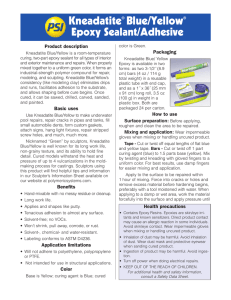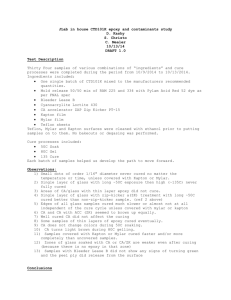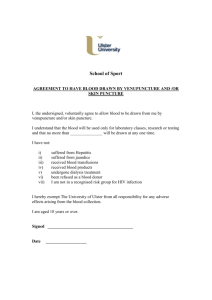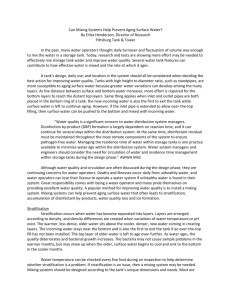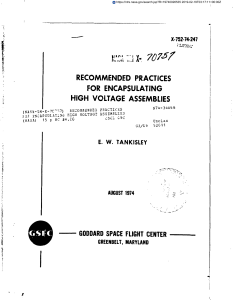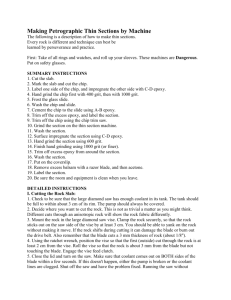8c CTD-101K Epoxy part C evaporation Study rev 1
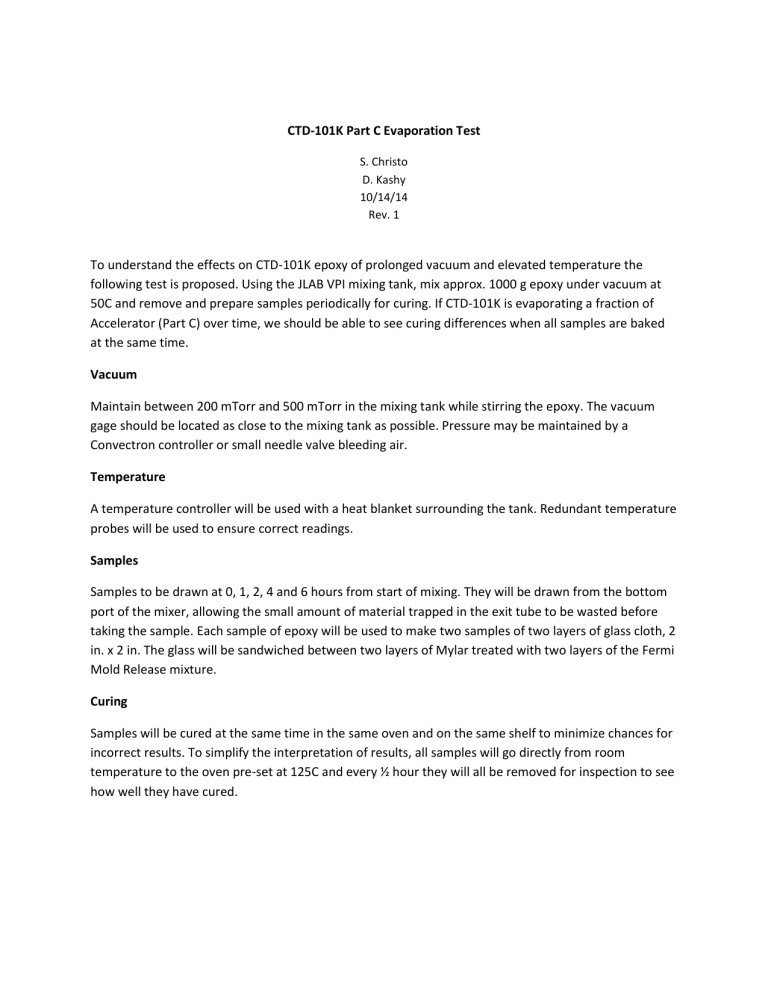
CTD-101K Part C Evaporation Test
S. Christo
D. Kashy
10/14/14
Rev. 1
To understand the effects on CTD-101K epoxy of prolonged vacuum and elevated temperature the following test is proposed. Using the JLAB VPI mixing tank, mix approx. 1000 g epoxy under vacuum at
50C and remove and prepare samples periodically for curing. If CTD-101K is evaporating a fraction of
Accelerator (Part C) over time, we should be able to see curing differences when all samples are baked at the same time.
Vacuum
Maintain between 200 mTorr and 500 mTorr in the mixing tank while stirring the epoxy. The vacuum gage should be located as close to the mixing tank as possible. Pressure may be maintained by a
Convectron controller or small needle valve bleeding air.
Temperature
A temperature controller will be used with a heat blanket surrounding the tank. Redundant temperature probes will be used to ensure correct readings.
Samples
Samples to be drawn at 0, 1, 2, 4 and 6 hours from start of mixing. They will be drawn from the bottom port of the mixer, allowing the small amount of material trapped in the exit tube to be wasted before taking the sample. Each sample of epoxy will be used to make two samples of two layers of glass cloth, 2 in. x 2 in. The glass will be sandwiched between two layers of Mylar treated with two layers of the Fermi
Mold Release mixture.
Curing
Samples will be cured at the same time in the same oven and on the same shelf to minimize chances for incorrect results. To simplify the interpretation of results, all samples will go directly from room temperature to the oven pre-set at 125C and every ½ hour they will all be removed for inspection to see how well they have cured.
Test and Results
1000 g epoxy was mixed as per vendor instructions. Sample #1 was drawn from the mixture before being placed in the heated mixing tank under vacuum. Temperature of the mixing vessel was maintained at 55C and pressure at 250 mTorr. Samples #2 through #8, approximately 5 cc each, were drawn from the mixing vessel after bleeding approx. 10 cc from the bottom withdrawal tube to waste at 1 hour intervals. This is a slight deviation from the original plan to take samples at 0, 2, 4, and 6 hour intervals.
Sample #9 was drawn the next morning after being left in the mixer under heat and vacuum. All of the samples were prepared on the same Teflon board and heated together (samples #1 - #8 were bagged overnight till #9 could be drawn). Two layers of 2” x 2” glass cloth were wetted with each sample of epoxy on the Teflon board and covered with a piece of Mylar 2.25” x 2.25” with the wet side of the
Mylar being coated with the Fermi mold release.
The board with samples was placed in the preheated oven at 125C. After every ½ hour the board was removed, cooled, and all samples checked for curing. The test was stopped after 2 hours. At every stage of inspection, no discernable difference was observed in the cure of any of the samples.
At ½ hour – quite gelled – rubbery
At 1 hr – felt fully cured - hard
At 1.5 hr – felt fully cured - hard
At 2 hr – felt fully cured – no difference
Notes
The vacuum line from the pump is ¾” ID clear Tygon tube. Condensation of liquid droplets was observed inside the tube nearest to the mixing tank. This condensation persisted throughout the first day of pumping but disappeared by the next morning. There was no residue, either oily or watery, found.
